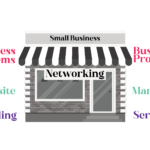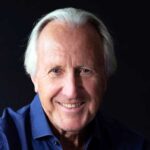By Amber Daines
I am in the middle of writing my second business book and while I am passionate about its content and its potential brand positioning value for me, it’s been a hard slog some days. Why? Because I am running a thriving communications training agency and raising two small humans, and because unlike my first self-published book “Well Spun: Big PR and Media Ideas for Small Business” published in 2013, this process is not novel, no pun intended.
Scores of local and international business leaders I meet say that writing a book is like the new business card. I tend to agree but let me add, it is one pretty expensive business card. The process of self-publishing is very invigorating and liberating – you have control on the cover art, the typefaces, the design, the words and even the sale price. But you also fund it. All of it.
Factoring in your “hourly fee” that takes you away from servicing clients, or meeting new ones is a cost. Plus add in the time you spent researching, writing and then promoting the final book, these are real costs that many new writers have not yet factored into their book budget.
The good news is my newest book will be in the hands of my publisher in a month, then I can reflect more on the lessons I learned second time around. For now, I did want to share with my biggest take outs from the overall experience so far. I trust this will help you with a book in your head get writing and profiting soon too.
1. Publishers Look for Audiences not Authors
Traditional publishers want somebody with an audience before they take on a new author. Many won’t consider marketing a book unless it’s already selling. Whether or not the book sells is dependent upon the author’s ability to sell it online or in book stores. I chose to self-publish as my name as a journalist and PR leader was not enough to make the 10,000 sales minimum that a “best seller” in my native Australia required by a mainstream book publisher.
However, if you want to try to secure a book deal but don’t have an audience, the best thing you can do is start blogging. It’ll build your audience and validate whether or not you’re a good writer. It can be a good way to try the writing game in a low risk way before penning the standard 30,000 words for a decent-sized book!
2. Use a Ghost Writer
I have not had anyone else write my books as I am a trained print reporter and seasoned writer for business clients. It is what I do best, I hope. However, I do have a trusted ghost editor to help review, shape the final content and give me some in-depth advice.
Many big-time authors don’t write their own books – a number of celebrity writers and others are open about that. People with big audiences and those of us with day jobs often don’t have a lot of time. One way to save time is to outsource the creation of your book. It’s not like Steve Jobs assembled iPhones, but that doesn’t take away from the fact that it was his product.
A number of well-known authors aren’t necessarily amazing writers. They have influential ideas and can communicate those ideas as speakers, but they struggle to put those ideas in writing. Oftentimes, a ghost writer can write and communicate those ideas better than the author, which results in a higher-quality book. Online freelancer services like www.elance.com can help find someone experience and in your budget too.
3. Know How to Sell It Before You Write It
Just like with any product, you need to know how to sell it before you create it.
As Thomas Edison said: “I never perfected an invention that I did not think about in terms of the service it might give others… I find out what the world needs, then I proceed to invent.”
Yet, most authors write about what they think is interesting and hope that other people find it interesting. Wrong approach.
Before you start the book process:
- Who you’re going to sell it to.
- Who the end user is as sometimes the buyer and reader are different.
- What price point you’re going to set it at.
- How you’re going to distribute it.
- What you’re going to do to promote it.
The answers to these questions will help you write a book that people want to read. If it’s not marketable, it won’t sell. And if it doesn’t sell, what’s the point?
4. Amazon Best Seller Status is Somewhat Misleading
Fact: You only need to sell about 300 books to become an Amazon Best-Seller. If all of those sales come on the same day, you’ll be bumped to the top of your sub-sub-sub-sub-category. In turn, your book is a best-seller for a few hours.
Since people figured this out, they pre-sell their book on their site months before it’s launched. Then on launch day, they manually submit those orders to Amazon so it appears as though lots of people are buying it.
Not all Amazon Best Sellers do this, but many of them do. When someone claims to be a bestselling author, ask them how long they were at the top of the list? It is just good to know.
5. Traditional Publishing is Not Dead
For the first time in history, publishers need authors more than authors need publishers. That doesn’t mean publishers accept any random book off the street. It just means that if you’re a good writer, you have a better chance selling it yourself. That is why I chose self-publishing as well as the fact I can be sure of what I am writing is what ends up in the final edit.
Publishers will take 10% royalties from the traditional publishing route. You can easily now self-publish your book through a service like Create Space and pay someone to put your book on Kindle and iBooks.
6. Books Don’t Make a Profit But…You Can Make Money
According to one study by a leading publishing firm, 70% of books don’t make a profit. When people joke about the cover designer making more than the author, it’s often the case.
There are lots of upfront costs with creating a book. Some of ours where:
- Promotional copies.We printed and shipped 100, 138-page promotional copies to get media coverage in around 10% of those outlets approached.
- First running of print books.We bought 150 copies for our initial running for passing to clients and case studies I interviewed in my debut book.
- Shipping and materials. We fulfilled the first couple hundred orders ourselves. We didn’t get paid, however, until months later because the money had to run through the publisher.
- PR expenses.We were invited to New Zealand to give a key note talk on my book topi around PR for CEOs and paid my own travel expenses.
All told, we spent over $13,000 on my first book. The cover price didn’t pay for the production cost but it did help me immensely in other ways that DID make me money and also helped me fuel my own motivation to do it again. It was a bucket list moment for me to hold that final bound print version in my hands and show my family what I had achieved all by myself.
Being a published author opens the door for other opportunities like speaking, training programs, and consulting. And that is where the real value is.







